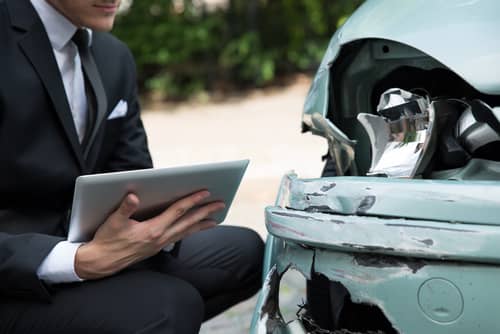A significant factor in any car crash is the location of impact. When a driver sideswipes another vehicle, the damage can often be minor, but head-on collisions to vulnerable parts of a car can have catastrophic effects.
T-bone accidents, also known as side-impact collisions, are some of the most dangerous car accidents. As with any traffic accident, proving liability can often be challenging. Learn more about T-bone accidents and how fault is determined after these serious crashes.
T-Bone Accidents Explained
T-bone accidents occur when the front of one vehicle collides with the side of another, creating a “T” shape at the point of impact. These accidents are most likely to happen at intersections, where cars often drive in different directions.
Running stop lights and similar moving violations often result in side-impact collisions.
An additional element of danger in T-bone accidents comes from the location of impact. The side sections of most vehicles are not as structurally sound as the front or rear section. As such, there’s little there to protect drivers and passengers.
Other factors that can influence the severity of a T-bone accident include:
- The speed of the vehicles involved at the time of impact
- The size of the vehicles
- The presence or lack of safety features
- The use of seat belts
- Weather and visibility
Even a minor T-bone accident can result in serious bodily injury and property damage.
Liable Parties in a T-Bone Accident
As with any car accident, insurance companies, law enforcement, and attorneys will review the evidence and investigate the details of the crash.
Because California courts use comparative fault to determine the percentage of liability, one or more parties may be deemed responsible for a crash.
Drivers Involved
In most T-bone accidents, the driver or drivers will be held liable for the crash.
Fault generally involves some negligence or reckless behavior behind the wheel. The following may be grounds to establish fault in an accident:
- Distracted driving
- Speeding and traffic violations
- Driving under the influence (DUI)
- Fatigue
- Inexperienced driving
In some cases, both drivers involved in an accident may share responsibility.
Vehicle Defects
In some car collisions, a defective component in one of the vehicles involved can cause or contribute to an accident. This can encompass a wide range of malfunctions to the brakes, lights, wheels, accelerator, and other critical parts.
Anytime a vehicle fails, a T-bone accident is one potential outcome. Courts may decide to assign fault to:
- The automobile manufacturer for selling a defective vehicle
- The owner of the vehicle for failing to get routine maintenance
- The mechanic that performed sub-par work on the car
When a mechanical defect leads to a crash, you’ll need a skilled car accident attorney who can file a lawsuit on your behalf and hold the responsible parties accountable.
Evidence for Proving Fault
The procedure for successfully proving fault begins at the crash scene.
Law enforcement will generally be called to the site of a T-bone crash and begin gathering evidence. Such evidence may include:
- Photos of the crash to document skid marks, debris, and property damage
- Surveillance videos from nearby establishments
- Witness statements
- Blood tests if a DUI is suspected
In many cases, a police report may not be enough to support your claim. As such, you’ll need to avail yourself of the resources of an experienced car crash attorney, who can investigate the accident further and obtain additional evidence to support your claim.
Investigative steps a personal injury lawyer may take include:
- Consulting with traffic experts
- Reconstructing the events leading up to the crash
- Researching automotive defects
- Interviewing additional witnesses
The seasoned personal injury attorneys at Saeedian Law Group represent T-bone accident victims throughout the Los Angeles area. Contact us today to see how we can help you recover compensation for your accident.
